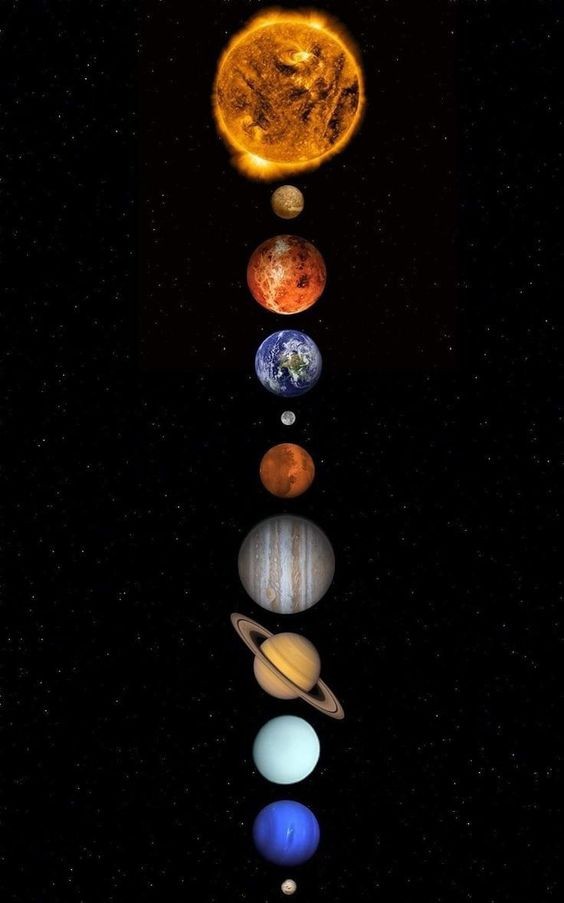Exploring the Solar System: A Journey Through Our Cosmic Neighborhood
The solar system is a vast and fascinating place, filled with diverse planets, moons, asteroids, and other celestial bodies that offer a glimpse into the wonders of the universe. Each element in this cosmic neighborhood has its own unique characteristics and stories, making it a treasure trove of knowledge and discovery.
The Sun: The Heart of Our Solar System
At the center of our solar system lies the Sun, a massive ball of burning plasma that provides the energy necessary for life on Earth. The Sun's gravity holds the solar system together, influencing the orbits of planets and other objects. Understanding the Sun is crucial to comprehending the dynamics of the solar system, as it drives the climate and weather patterns on the planets, particularly on Earth.
Fascinating Facts About the Sun:
The Sun is about 4.6 billion years old.
It accounts for 99.86% of the solar system's total mass.
The Sun's core is so hot that it enables nuclear fusion, producing energy that eventually reaches Earth as sunlight.
The Planets: A Diverse Array of Worlds
The eight planets in our solar system are divided into two categories: terrestrial planets and gas giants.
Terrestrial Planets
Mercury: The smallest planet and closest to the Sun, Mercury is a rocky world with extreme temperatures, ranging from scorching hot during the day to freezing cold at night. Its surface is heavily cratered, resembling our Moon.
Venus: Often called Earth's "sister planet" due to its similar size and composition, Venus is enveloped in thick clouds of sulfuric acid, with surface temperatures hot enough to melt lead. Its atmosphere creates a runaway greenhouse effect, making it the hottest planet in the solar system.
Earth: Our home planet, Earth is the only world known to support life. It has a diverse environment with oceans, mountains, forests, and deserts, all sustained by a delicate balance of atmospheric and geological processes.
Mars: Known as the "Red Planet," Mars has captivated human imagination for centuries. It has the largest volcano and canyon in the solar system, and its surface shows evidence of ancient river valleys, indicating that water once flowed there.
Gas Giants
Jupiter: The largest planet in our solar system, Jupiter is a gas giant with a massive atmosphere primarily composed of hydrogen and helium. It has a Great Red Spot, a colossal storm that has raged for centuries, and a system of moons, including the four large Galilean moons.
Saturn: Famous for its stunning ring system, Saturn is another gas giant with an atmosphere rich in hydrogen and helium. Its rings are composed of ice and rock particles, creating a breathtaking visual spectacle. Saturn's moon, Titan, has lakes of liquid methane and an atmosphere thicker than Earth's.
Uranus: Uranus is an ice giant, unique for its tilted axis that causes it to spin on its side. This planet has a faint ring system and is primarily composed of water, ammonia, and methane ices, giving it a bluish hue.
Neptune: The farthest planet from the Sun, Neptune is an ice giant known for its intense blue color and supersonic winds, the fastest in the solar system. Neptune's moon, Triton, is geologically active, with geysers that spew nitrogen gas.
The Moons: Worlds of Their Own
Moons, or natural satellites, orbit many of the planets in our solar system. These moons vary greatly in size, composition, and geological activity.
Notable Moons:
Earth's Moon: The only celestial body beyond Earth where humans have set foot, the Moon influences Earth's tides and has a significant impact on our planet's environment.
Europa: One of Jupiter's moons, Europa is a prime candidate in the search for extraterrestrial life due to its subsurface ocean beneath an icy crust.
Titan: Saturn's largest moon, Titan, has a thick atmosphere and liquid methane lakes, offering a unique environment unlike any other in the solar system.
The Asteroid Belt and Beyond
Between Mars and Jupiter lies the asteroid belt, a region filled with rocky remnants from the early solar system. These asteroids vary in size from tiny pebbles to dwarf planets like Ceres.
Beyond Neptune lies the Kuiper Belt, a region of icy bodies, including Pluto, once considered the ninth planet. The Kuiper Belt is home to many comets and other small, icy objects that offer clues about the solar system's formation.
Comets: Messengers from the Outer Reaches
Comets are icy bodies that originate from the distant regions of the solar system. As they approach the Sun, they heat up and develop glowing comas and tails, creating spectacular displays in the sky. Comets like Halley's Comet have been observed for centuries and are key to understanding the outer solar system.
The Oort Cloud: The Edge of the Solar System
The Oort Cloud is a hypothetical, distant region of the solar system, thought to be the origin of long-period comets. It represents the boundary of the Sun's gravitational influence, marking the edge of our solar system and the beginning of interstellar space.
Conclusion: A Never-Ending Journey of Discovery
Exploring the solar system is an ongoing journey that continues to reveal new and exciting discoveries. From the scorching surface of Mercury to the icy depths of the Kuiper Belt, our solar system is a dynamic and ever-changing environment, offering endless opportunities for exploration and learning. Whether through telescopes, robotic spacecraft, or future manned missions, humanity's quest to understand our place in the universe is deeply connected to the mysteries of the solar system.






